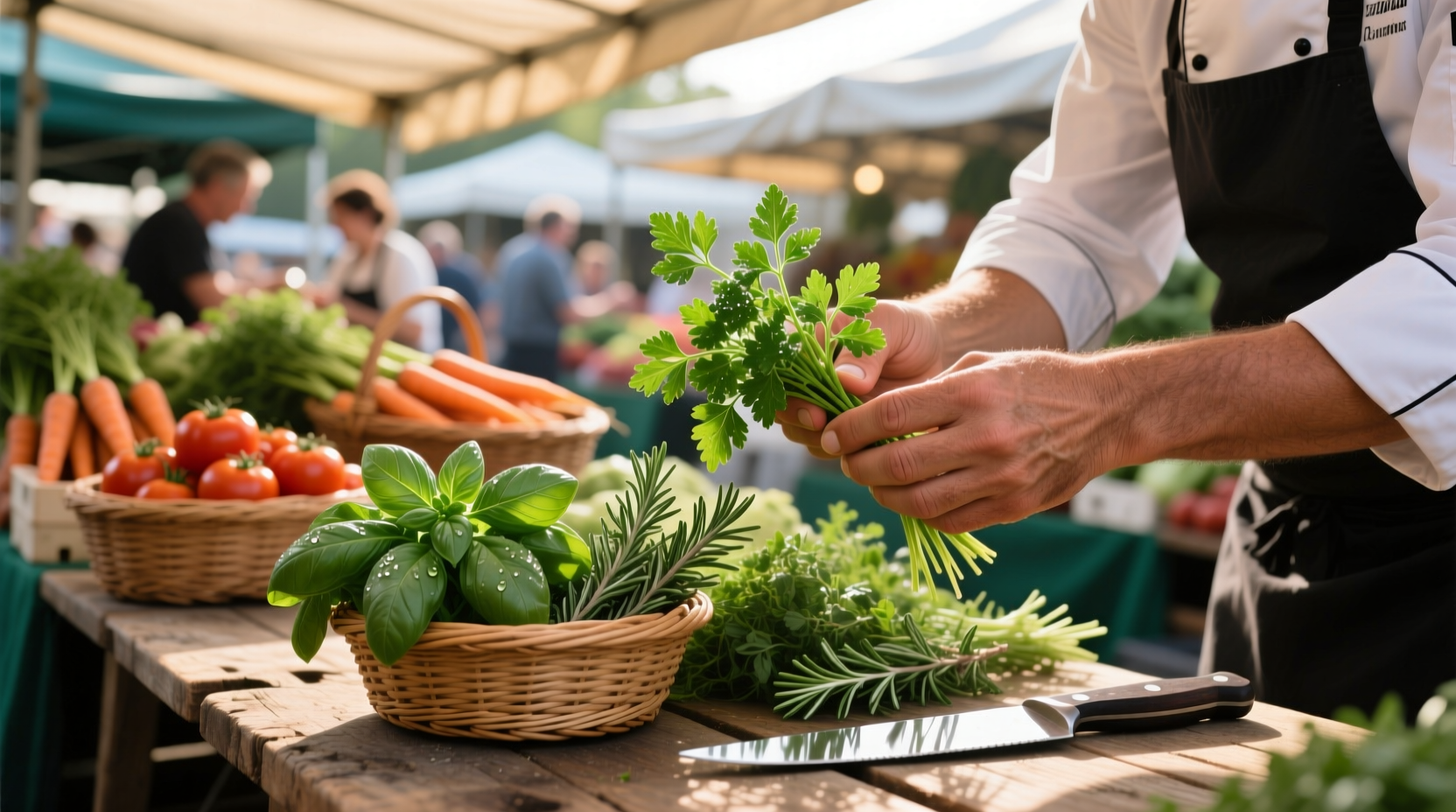Your Complete Guide to Choosing Perfect Parsley Every Time
Whether you're shopping at a grocery store or harvesting from your garden, knowing how to pick parsley properly makes a dramatic difference in your cooking results. As a professional chef who's worked with herbs daily for over 15 years, I've seen how the right selection technique transforms ordinary dishes into extraordinary ones. Let's break down exactly what to look for at each stage of the process.
The Visual Inspection: What Your Eyes Should Catch First
Before you even touch the parsley, perform a visual assessment. Fresh parsley should display a uniform, vibrant green color throughout - no yellowing or browning at the edges. The leaves should appear perky and upright, not drooping or limp. When examining supermarket bunches, check that the stems look moist at the cut ends, which indicates recent harvesting.
According to agricultural experts at the University of California Cooperative Extension, parsley that maintains turgor pressure (firmness) in its leaves typically contains higher concentrations of essential oils that deliver superior flavor. This firmness directly correlates with freshness and flavor intensity.
| Characteristic | Flat-Leaf Parsley | Curly Parsley |
|---|---|---|
| Flavor Profile | Stronger, more robust, slightly peppery | Milder, slightly grassier |
| Best For | Cooking, sauces, pesto, Mediterranean dishes | Garnishing, salads, visual appeal |
| Texture | Softer leaves, easier to chop finely | Firmer texture, holds shape better |
| Storage Life | 4-5 days refrigerated | 5-7 days refrigerated |
The Critical Touch Test: What Your Fingers Reveal
After visual inspection, gently squeeze a small section of the bunch. Fresh parsley should feel crisp and spring back when released. If the stems feel slimy, mushy, or leave moisture on your fingers, pass on that bunch. The University of Massachusetts Amherst Extension notes that parsley with high water content in its cells (indicating freshness) will snap cleanly when bent, while older parsley will bend without breaking.
When harvesting from your garden, pick parsley in the morning after the dew has dried but before the heat of the day. The cooler temperatures preserve essential oils that give parsley its distinctive flavor. For supermarket purchases, check that the bunch hasn't been sitting under misters for too long, which can accelerate spoilage.

The Aroma Assessment: Your Nose Knows Best
Bring the parsley close to your nose and inhale gently. Fresh parsley emits a clean, slightly peppery, grassy aroma. If you detect any mustiness, sourness, or lack of scent altogether, the parsley is past its prime. Professional chefs rely heavily on this sensory test because aroma directly correlates with flavor potential.
According to research published in the Journal of Agricultural and Food Chemistry, the volatile compounds responsible for parsley's characteristic scent begin degrading within 48 hours of harvest. This explains why properly selected fresh parsley dramatically outperforms older specimens in both aroma and taste.
Seasonal Selection Strategies
Parsley performs differently throughout the year. During spring and early summer, you'll find the most tender, flavorful leaves as the plant produces new growth. In late summer and fall, the leaves may become slightly tougher but develop more complex flavor compounds. Winter parsley (often greenhouse-grown) tends to have milder flavor but maintains good texture.
When selecting parsley for specific dishes, consider these context boundaries:
- For sauces and cooked dishes: Choose flat-leaf parsley for its stronger flavor that holds up during cooking
- For garnishing: Curly parsley provides better visual contrast and holds its shape
- For raw applications: Look for the youngest, most tender leaves regardless of variety
- For freezing: Select slightly more mature leaves which withstand freezing better
Common Selection Mistakes to Avoid
Even experienced cooks sometimes make these parsley selection errors:
- Choosing based on price alone: The cheapest bunch often represents older stock
- Ignoring stem condition: Wilted stems indicate the entire bunch is deteriorating
- Not checking the bottom: Supermarket bunches often hide yellowing leaves beneath the packaging
- Overlooking variety differences: Using curly parsley in a dish that requires flat-leaf's stronger flavor
Proper Storage to Maintain Freshness
After selecting perfect parsley, maximize its shelf life with these professional techniques:
- Trim 1/4 inch from the bottom of the stems
- Place in a glass with 1-2 inches of water (like a bouquet)
- Cover loosely with a plastic bag
- Store in the refrigerator's crisper drawer
- Change water every other day
This method, recommended by the USDA's FoodKeeper app, keeps parsley fresh for up to two weeks. Avoid washing parsley until ready to use, as excess moisture accelerates spoilage.
When to Grow Your Own Parsley
If you frequently use parsley, consider growing your own. Homegrown parsley typically offers superior flavor and freshness compared to store-bought. Start seeds indoors 8-10 weeks before the last frost, or purchase established plants. Parsley grows well in containers and requires only moderate sunlight. The flavor intensifies when the plant begins flowering, though leaf production decreases.











 浙公网安备
33010002000092号
浙公网安备
33010002000092号 浙B2-20120091-4
浙B2-20120091-4